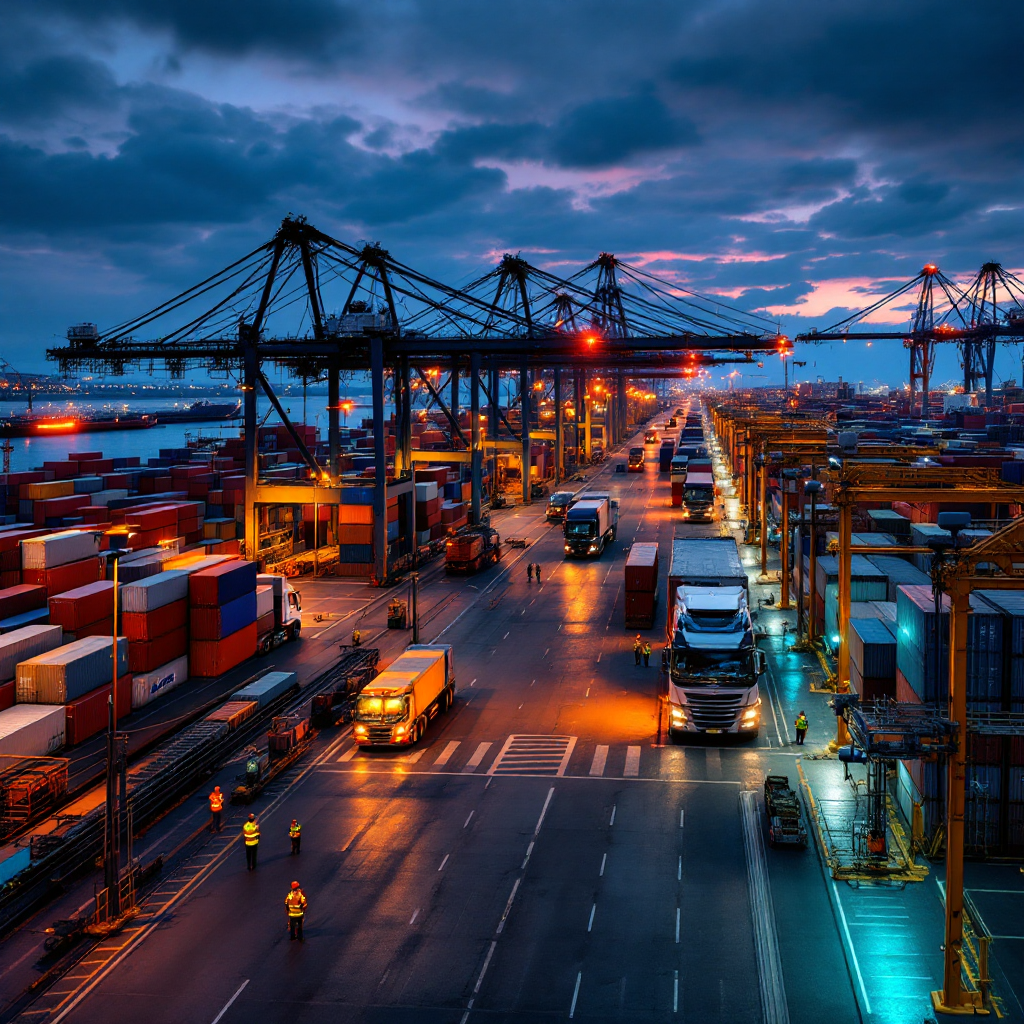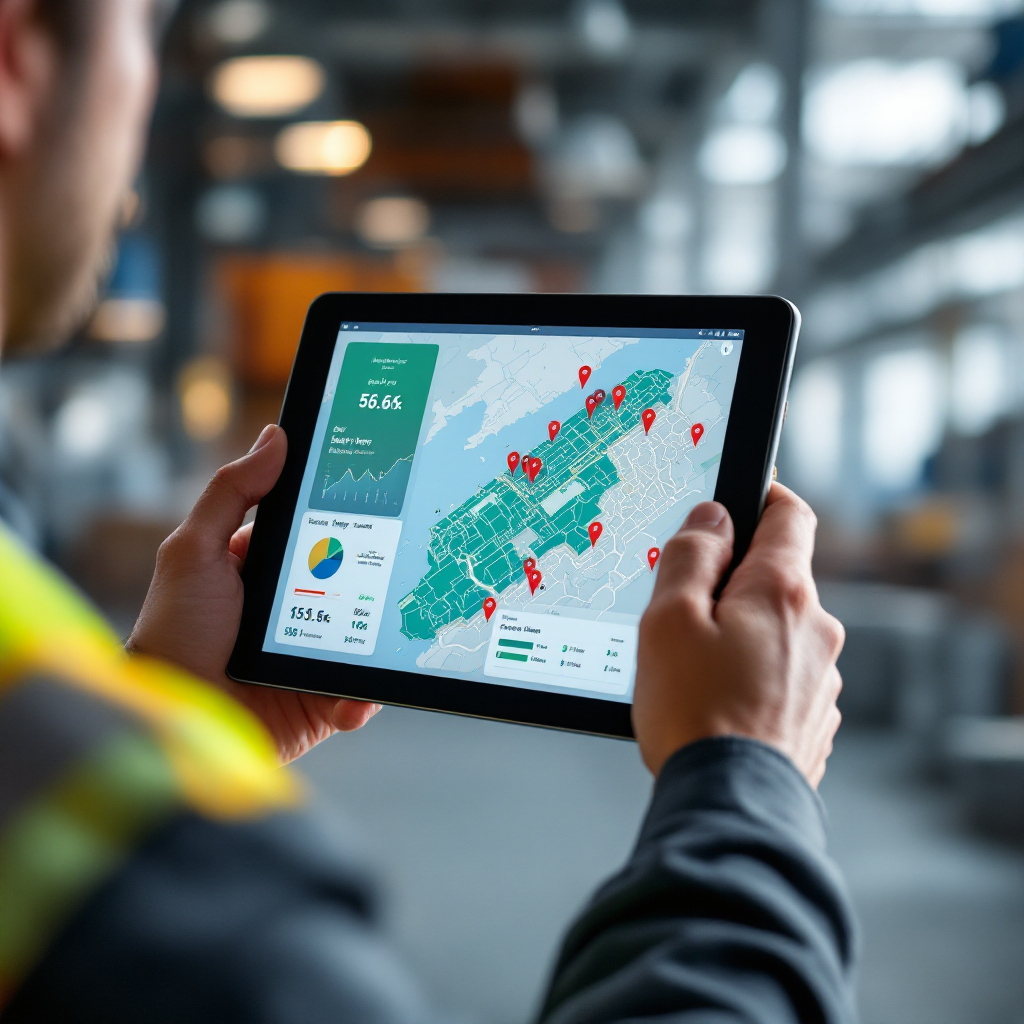AI PPE detection in ports and terminals
AI video analytics for real-time PPE detection
Ports and terminals need fast, accurate systems to keep workers safe. First, AI video analytics can process video feeds and flag missing protective gear instantly. Second, the approach uses computer vision to identify hard hats, vests, safety glasses and other specific ppe on people in camera views. Third, systems provide real-time feedback at gate points, on the quay, and on vehicle routes. For example, automated systems have been reported to significantly reduce workplace accidents by about 20% in ports, which supports investment in video-based monitoring [EMSA report]. Also, studies show that careful compliance monitoring, combined with training and enforcement, can reduce injuries by up to 30% [ISM Code research]. Using AI-powered ppe detection at scale helps operations managers see trends, near misses, and repeat non-compliance so they can act. The system also streams structured events so leaders outside security can use the data. Visionplatform.ai demonstrates this approach by turning existing CCTV into sensors that detect people and PPE, and then publishing events for dashboards and OT systems. In addition, ports can combine these detections with access control to stop unauthorised entry into high-risk zones. The platform supports real-time ppe detection at chokepoints, which helps enforce safety protocols and raise safety standards. For details about device compatibility and model options, see our practical guide to ppe detection deployment PPE detection in airports. Finally, using AI to monitor PPE usage creates a culture of safety that keeps staff visible and accountable during high-traffic shifts.
Detection technology and monitoring system architecture
Designing a detection technology stack for a terminal starts with hardware choices and ends with data flow. First, select IP camera models that do well in low light and harsh weather, and pair them with edge devices for local processing. Next, validate the AI models for your site. You can choose a pre-trained model, retrain on local footage, or build a custom classifier. Visionplatform.ai lets teams pick a model from a library, refine it on private data, and deploy on edge GPUs so video locally stays private. Then, plan the monitoring system architecture to balance latency and storage. For real-time monitoring, process critical alerts at the edge, and send aggregated safety data to a central server for dashboards. Also, include redundancy for network dropouts and encrypted channels for safety data. Integration with existing VMS is critical. For example, you can stream detections into Milestone XProtect or publish events over MQTT to SCADA and BI tools. This approach improves operational efficiency and keeps detections actionable for safety teams and operations manager roles. Consider whether to keep all video locally, or to store only event metadata, because privacy and the EU AI Act demand careful choices. Use audit logs for transparency. For large port operations, design for scale so thousands of streams may be added without re-architecting. Finally, the stack should support ongoing model updates and feedback loops. If false alarms appear, teams can retrain ai models on edge-captured clips to reduce noise. For more context on people detection and thermal use cases that apply at gates and checkpoints, review our resources on people detection in airports and thermal people detection people detection and thermal detection. 
AI vision within minutes?
With our no-code platform you can just focus on your data, we’ll do the rest
Improving visibility of pedestrians and forklift in safety in ports
Mixed traffic creates visibility challenges where pedestrian and forklift routes cross. First, blind spots and stacked containers create occlusion. Second, poor lighting and wet surfaces reduce camera effectiveness, and human error increases. Third, standard PPE like high-visibility vest or hard hats are helpful, but you must ensure ppe at all times. AI systems can monitor pedestrian safety by tracking people, identifying forklifts, and triggering an alert when someone enters a forklift work aisle without required gear. These systems can also detect near misses and log them for safety teams. In trials, integrated visibility monitoring combined with training showed up to 30% fewer incidents in comparable maritime settings [ISM Code research]. Use cases include geo-fencing of forklift lanes, dynamic speed limits for vehicles, and automated warnings when pedestrians approach moving equipment. The system also supports protective eyewear and safety glasses checks at repair bays and near chemical handling points. In addition, cameras can pair with proximity beacons so forklifts slow automatically if a tagged worker is nearby. This reduces the risk of accidents when heavy machinery operates near foot traffic. For continuous improvement, safety managers should review aggregated safety data weekly, then refine camera placements and rules. Also, integration with a tracking system helps supervisors understand who is entering high-risk zones and when. For further details on how video can count people and map density for pedestrian flows, see our work on people counting and crowd density analytics applied to busy check-in and transit areas people counting. The result is better pedestrian safety, fewer collisions, and a more resilient culture of safety on the site.
Alert system for PPE violations in terminal and port
An effective alert system links detection with fast response. First, the system watches video in real time. Then, it sends an alert to supervisors and frontline workers if someone lacks required gear. Alerts can be audio at a gate, visual on a screen, or mobile push to a supervisor’s phone. An alert system that uses tiered escalation will first warn the worker, then notify a supervisor if non-compliance continues. For example, coordinated alerts and multi-agency efforts helped the Port of Boston report a 25% increase in PPE adherence among dockworkers over two years [Port of Boston report]. In practice, alerts must be precise to avoid alarm fatigue. Use tight detection rules for specific ppe such as vests and hard hats, and combine those rules with zone-based logic so alerts trigger only in high-risk zones. Also, mobile alerts can link to a short video clip so a supervisor sees context before acting. The platform should support customization so safety managers can tune sensitivity and reduce false positives. This approach supports safety protocols and specific safety checks at access points. In addition, combining alerts with access control can enforce ppe requirements by preventing gate opening until a worker meets ppe requirements. Use alert logs to drive coaching conversations and to track repeat offenders. For technical setups, ensure the alert pipeline offers low latency and reliable delivery over secure channels. Finally, automated ppe detection and alerting drives safer work habits, and it supports accountability across operations and safety teams. The system also helps operations manager roles integrate visual alarms into daily procedures.
AI vision within minutes?
With our no-code platform you can just focus on your data, we’ll do the rest
Assessing safety risks to improve safety with AI PPE detection
Start by mapping safety risks across the terminal. Identify chemical exposure points, heavy handling zones, and areas with infectious agent risk. For example, fumigants and residues in containers create hazardous exposure that demands personal protective equipment and strict controls [health risks study]. Using AI, you can score zones by frequency of non-compliance, traffic density, and past incidents. Then, prioritise interventions where the risk of accidents is highest. Combining ai detection with targeted training and enforcement can cut injury rates by up to 30% when part of a broader safety programme [ISM Code research]. Use the scoring to schedule patrols, add signage, and reposition cameras. Also, consider new fuel and energy types such as ammonia that introduce fresh hazards; prepare updated ppe requirements where needed [ammonia fuel report]. AI can produce dashboards showing hot spots, trends, and near misses, and it can recommend rule changes. Risk scoring must factor in human error, equipment condition, and environmental variables. For example, during peak operations, a combination of high-traffic and wet decks raises exposure. Use that signal to temporarily restrict certain activities or to require additional PPE. In addition, once a zone gets flagged repeatedly, allocate resources to remediate the hazard. Finally, paired with ppe compliance monitoring and supervisory coaching, AI detection helps raise safety standards and produce measurable increased safety across terminals. 
Implementation: system architecture for detection and monitoring system at terminals
Roll out the monitoring system in phases. First, pilot on a single dock or gate. Next, integrate detections with your VMS and incident workflows. Then, expand coverage to cranes, container yards, and gates. A step-by-step deployment reduces disruption and keeps stakeholders aligned. From a technical perspective, decide where to process video. Edge processing gives low latency, keeps video locally, and aids GDPR compliance. Cloud processing offers centralized training and heavier analytics, and it supports long-term model improvement. Hybrid architectures let you run real-time video checks at the edge, while sending anonymised metadata to the cloud for trend analysis. For network planning, estimate throughput per IP camera and allow headroom for spikes. Use QoS policies so alerts traverse reliably during busy periods. For model lifecycle, build a retraining loop: capture labeled clips from your site, retrain ai models, validate, then deploy updates at scale. Best practices include encrypting streams, limiting retention, and keeping model training in private environments. These steps help meet EU AI Act expectations while protecting privacy. Also, integrate with safety operations and access control so detections feed practical tasks. Include hikvision or other camera support via ONVIF, and ensure the system supports ip camera discovery and RTSP pull. Finally, maintain a governance process for alerts, so safety managers review thresholds and reduce false positives. The result is comprehensive safety monitoring that enforces safety standards, supports operational safety, and helps to reduce accident rates while improving operational efficiency and workplace safety.
FAQ
What is AI PPE detection and how does it work in ports?
AI PPE detection uses computer vision and AI models to inspect video feeds and identify whether workers wear required gear such as hard hats and vests. It processes video locally or at the edge, then issues alerts and logs events for supervisors.
Can AI systems handle harsh port environments?
Yes. With the right IP camera selection, lighting, and model tuning, systems can operate reliably in rain, low light, and cluttered scenes. Pilots help tune camera placement and model sensitivity for site conditions.
How fast are alerts for PPE violations?
Real-time video processing can generate alerts within seconds, enabling immediate correction and coaching. The alert pipeline supports audio, visual, and mobile push so teams can act quickly.
Do these systems respect privacy and compliance laws?
Systems that process video locally and store only metadata can meet strict privacy rules. Visionplatform.ai and similar designs keep models and training data on-prem to help with GDPR and the EU AI Act.
Will AI detection reduce accidents?
Evidence shows that automated monitoring can significantly reduce accident rates; one report cited about a 20% reduction in ports, and compliance programmes tied to monitoring can cut injuries up to 30% [EMSA] [ISM].
How do alerts integrate with existing operations?
Alerts can publish events to VMS, MQTT, or webhooks so safety operations and OT systems can consume detections. This lets an operations manager use detections for dashboards and KPIs.
Which PPE items can the system detect?
Models can detect hard hats, vests, safety glasses, and other specific ppe. Teams can create custom classes for unique gear and retrain ai models on local footage.
Is edge processing necessary?
Edge processing reduces latency, keeps video locally, and often meets privacy requirements. For large-scale analytics, combine edge detection with centralized trend analysis.
How should a terminal start a rollout?
Begin with a pilot at a busy gate or crane location. Then integrate alerts into work procedures, and expand coverage after tuning. Regular reviews of safety data keep improvements focused.
Where can I learn more about people detection and related use cases?
For adjacent use cases such as people counting, thermal detection, and ANPR use, explore Visionplatform.ai’s resources on people detection, thermal people detection, and ANPR/LPR solutions to see how camera-based sensors extend across safety and operations people detection, thermal people detection, ANPR/LPR.


